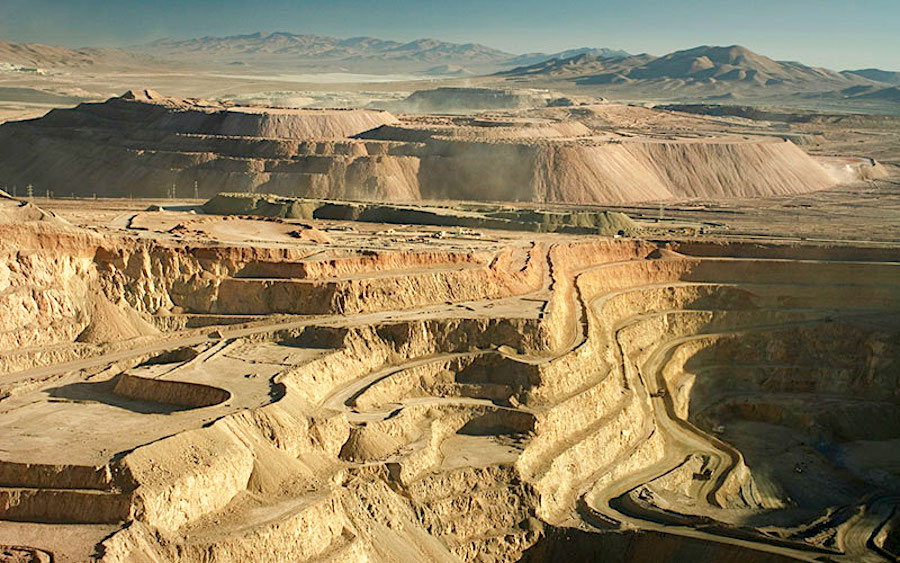
A century after many of Chile’s mines in the arid northern region were first opened, finding copper, or lithium, or gold or silver isn’t as easy as it once was. The concentration of minerals in the earth decreases as the miners dig deeper, meaning companies need to process more ore to extract the same amount of metal — a messy and highly polluting process to begin with. To fuel that effort, they need vast amounts of energy.
Chilean miner Antofagasta Plc. (LON:ANTO) knows this issue well and has been working to comply with a new law, passed in 2013, requiring miners to get about 20 percent of their power needs from renewable energy sources by 2025.
“Prices for renewables in Chile have become much more competitive, so it makes economic sense, as well as environmental sense, to move towards these sources,” Antofagasta’s Chief Executive Officer Ivan Arriagada said this week at the International Mining and Resources Conference (IMARC) in Melbourne, Australia.
The Zaldívar copper mine in Chile, a joint venture between Antofagasta and Barrick, will be the country’s first mine to operate with 100 percent renewable electricity.
“Today around 21 percent of all our power comes from renewables, with that number increasing to over 50 percent at our main site at Los Pelambres,” he noted.
Earlier this year, Antofagasta signed an agreement with electricity producer Colbún SA to run its Zaldívar copper mine, a joint venture with Canada’s Barrick Gold, solely on renewable energy—including wind, solar, and hydro — by 2020.
“In the north of Chile, we find one of the areas with the best solar radiation in the world all year round, and therefore there is a tremendous opportunity to shift copper production to renewables over time, achieving competitive pricing and lowering emissions at the same time,” Arriagada said.
Chile is now producing some of the cheapest energy in the world, fuelling hopes that it will become a solar version of Saudi Arabia. Having joined Mexico and Brazil among the top 10 renewable energy markets in the world, the copper-rich country is leading the clean energy transformation in Latin America, where investment in renewables has grown at double the global rate over the past decade, according to Antofagasta’s CEO.
Making the switch to clean energy will remove emissions equivalent to 350,000 tonnes of greenhouse gasses.
“More important than the percentage and the amount is the statement that we think that climate change is important and that we should be part of the solution,” said Arriagada.
On top of lowering emissions, the company is taking steps to reduce its water footprint.
“Water is critical for mining, especially in the north of Chile. Around 45 percent of our water is sourced from the sea across all our operations,” Arriagada noted.
While this is a trend that the mining industry is adopting in greater numbers, the CEO was hesitant to label it as a silver bullet solution.
“We believe there are some instances for smaller mines where it is not economically viable to use seawater,” he said. “In those cases where it is economically possible and environmentally sustainable to do so, those decisions should be made on facts and supported by science rather than ideology,” he said.
The company, majority-owned by Chile’s Luksic family, one of the country’s wealthiest, recently adjusted down its production guidance for 2018 to 705,000-725,000 tonnes from the previous 705-740,000 tonnes, but maintained its net cash cost target $1.35 per pound.
Comments
Scientia_Praecepta
Great news!